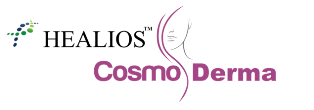What is Wart
A wart is typically a small growth that appears on a person’s hands or feet and looks like a solid blister or a small cauliflower. They may also appear on other parts of the body.
Warts have a rough texture and are caused by viruses, particularly one of several kinds of HPV (human papillomavirus). It is possible to get warts from others; they are contagious and usually enter the body in an area of broken skin.They typically disappear after a few months but can last for years and can recur.
Types Of Warts
The Common Wart– Common warts are skin growths caused by a virus called the human papillomavirus(HPV).This virus causes a rapid growth of cells on the outer layer of your skin.Common warts usually grow on your hands or fingers. Treatment helps prevent common warts from spreading to other parts of your body or to other people.
Flat Warts –These are flat-topped, smoother looking warts. They are brown or skin coloured. They are most commonly seen on the face of women. They are spread easily by shaving.
Plantar Warts – These are seen on the under-surface of the feet. They are thickened. They can be confused with corns or calluses. They will frequently have thrombosed blood vessels causing black dots. They can sometimes be uncomfortable if they are in weight-bearing areas. Occasionally they can be quite widespread involving large surfaces. They tend to grow into the skin rather than coming outwards as most other warts.
Genital Warts – Genital warts are one of the most common types of sexually transmitted infections.These appear in the genitaland peri-anal skin. They have a variety of appearances. Genital warts affect the moist tissues of the genital area. Genital warts may look like small, flesh- colored bumps or have a cauliflower – like appearance . In some cases, warts are too small to be visible.
Symptoms Of Warts
- Warts usually appear as rough elevations on the skin and come in various shapes and sizes.
- These are most commonly seen on the fingers, elbows, knees, face, scalp and soles of the feet. Common warts occur on the backs of the hands and on the fingers. Broken skin is a common place for these warts to grow.
- Foot warts cause a lot of pain and make it difficult to walk. Flat warts are those that occur in large numbers, in any part of the body.
- Genital warts, on the other hand, are amongst the most common sexually transmitted diseases (STD) affecting people today
What are the causes of warts
Different HPV (human papilloma virus) strains cause warts. The wart-causing virus can be passed on by close skin-to-skin contact, as well as through contact with towels or shoes.
Treatment & Procedures
- Stronger peeling medicine (salicylic acid). Prescription-strength wart medications with salicylic acid work by removing layers of a wart a little bit at a time. They may also stimulate your immune system’s ability to fight the wart.
- Freezing medicine (cryotherapy). Freezing therapy involves applying liquid nitrogen to wart, either with a spray or a cotton swab.The chemical causes a blister to form around your wart, and the dead tissue sloughs off within a week or so. It may also stimulate your immune system to fight viral warts. Usually repeat treatments requires every three to four weeks until the wart disappears.Some studies show that this treatment is more effective when combined with salicylic acid treatments.
Surgical or other procedures
- Other acids. doctor will shaves the surface of the wart and applies bichloracetic acid or trichloroacetic with a wooden toothpick. Repeat treatments every week or so will be require. Side effects include burning and stinging.
- Immune therapy. This method uses medications or solutions to stimulate your immune system to fight viral warts. Wart virus will be inject to dermal layer so it can produce antibodies.
- Minor surgery. Your doctor cuts away the wart or destroys it by using an electric needle (electrodesiccation and curettage). This procedure can be painful, so your doctor will numb your skin first. Because surgery can cause scarring, this method usually isn’t used to treat plantar warts.
- Laser treatment. Pulsed-dye laser treatment burns closed (cauterizes) tiny blood vessels. The infected tissue eventually dies, and the wart falls off. The evidence for the effectiveness of this method is limited, and it can cause pain and scarring.
- Vaccine. Human papillomavirus (HPV) vaccine has been used with success to treat warts.
Prevention
- Do not touch other people’s warts
- Do not use towels, flannels or other personal items of people who have warts
- Do not share shoes and socks with a person who has verrucas
- Do not scratch your warts or verrucas. If you do they will most likely spread
- Wear sandals when going into and out of communal showers
- Wear sandals when walking around communal pools
- Cover your wart or verruca with a waterproof band-aid when you go swimming
- There are special socks you can buy to cover verrucas
- Wear gloves in the gym if you have warts on your hands
- Do not brush, comb, shave, clip areas that have warts
- When filing or cutting your nails do not use the same utensil on the infected nail and then on the healthy nails
- Do not bite your fingernails if you have warts near them
- Keep your hands as dry as possible
- Wash your hands thoroughly after touching a wart.

 7975288129 / 7483528607
7975288129 / 7483528607
